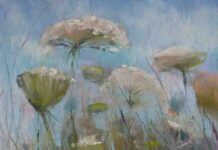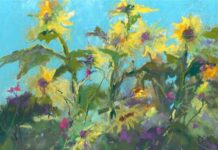A weed is generally defined as a plant growing in the wrong place, or more specifically, one that’s not valued in a specific environment and that often replaces desirable but less vigorous plants. One plant that pretty much always fits that description is the dandelion. It looks pretty “out there” but not when it’s taking over your garden! One of the most famous paintings of this “weed” is Dandelions by Jean-François Millet (1814–1875).
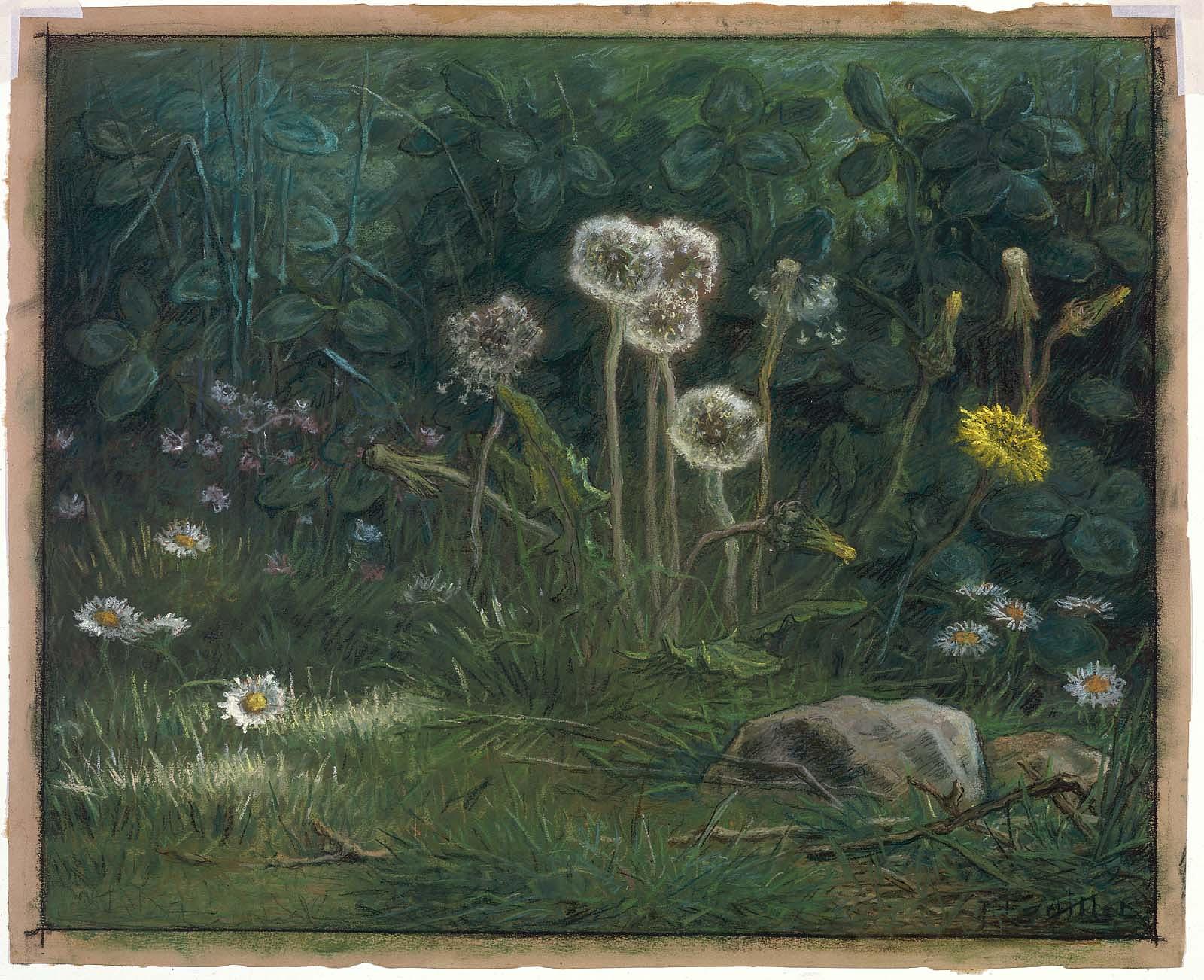
Pastel was a popular medium for many aristocratic portraits during the eighteenth century but it fell out of use after the French Revolution (1789-1799). Jean-François Millet was one of the first artists to once again pick up the medium to create fully-realised pieces. (It’s a bit ironic that the artist known for his peasant subjects was the person to bring this once aristocratic medium back into favour again!)
Getting back to Dandelions, perhaps it’s not surprising that Millet would choose to show us a closeup of this weed as his work focused on rural and agricultural life.
Let’s take a closer look at this painting by Jean-François Millet.
First, notice that Millet includes the different stages of the flower – from bud to flower, to seed production, to the last remains.
And did you notice that there’s actually only one open yellow flower shown?
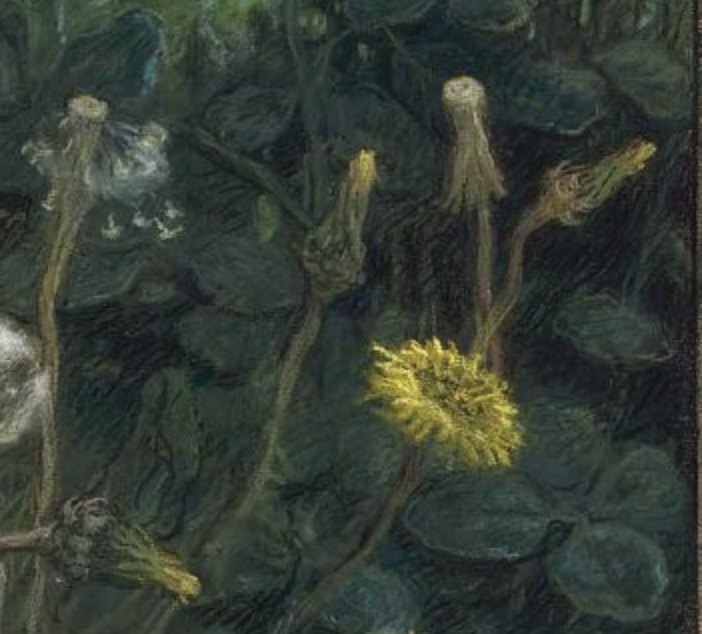
In fact, other than the few yellow centres in the tiny daisy-type flowers, and a wee bit in three dandelion buds, it’s the only yellow in the painting.
Now look at the path of light and other directional cues that takes us around the painting – from the seed heads to the yellow flower to the daisy flowers below, to the rock, to the streak of light on the lower left, and around we go again. Can you see this circular design?
You can see this more clearly in the black and white of the painting.
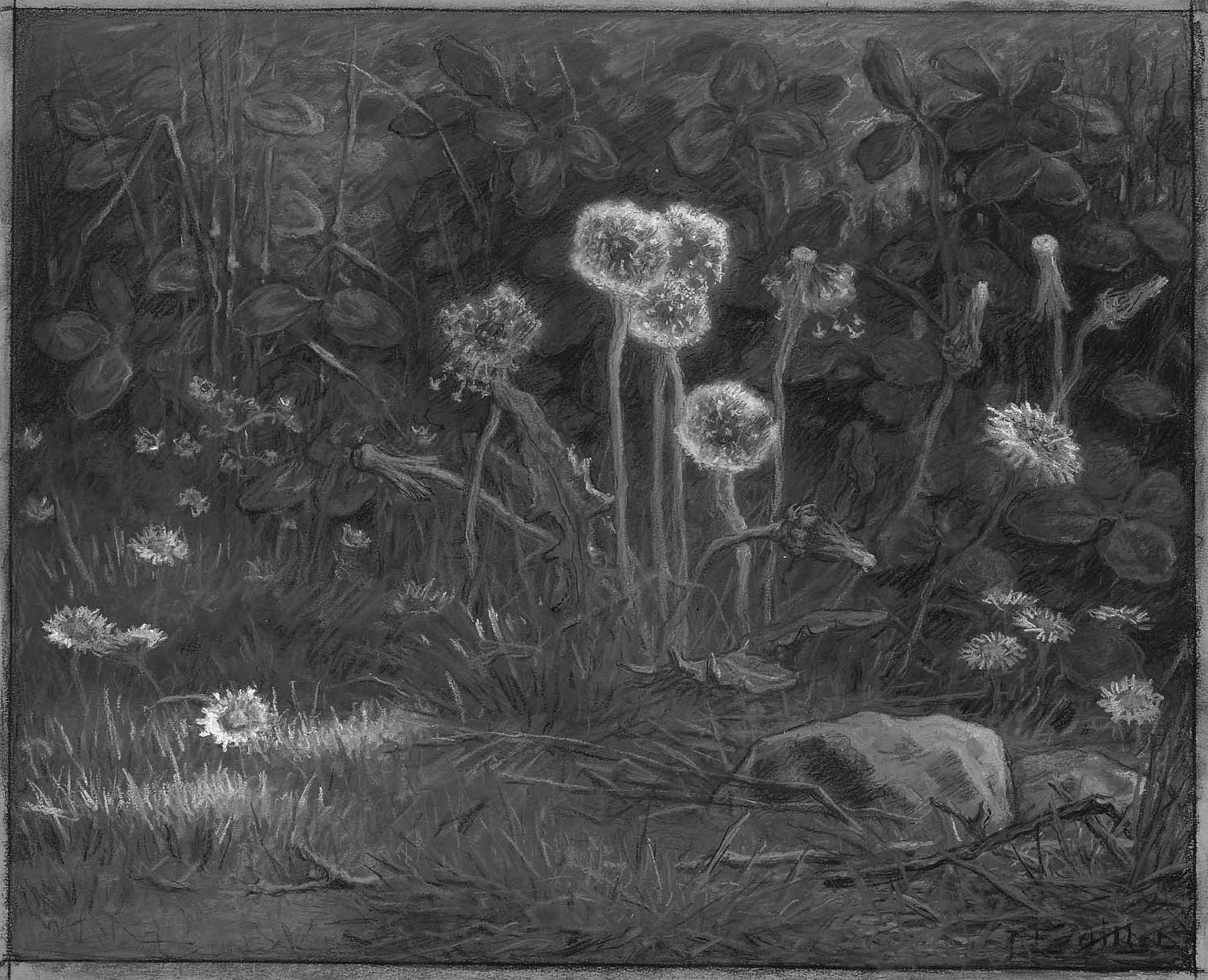
Surprising to notice perhaps, there isn’t that much sunlight in the picture, just some illumination of a few of the seed heads and that patch of light on the grass that also touches the daisy.
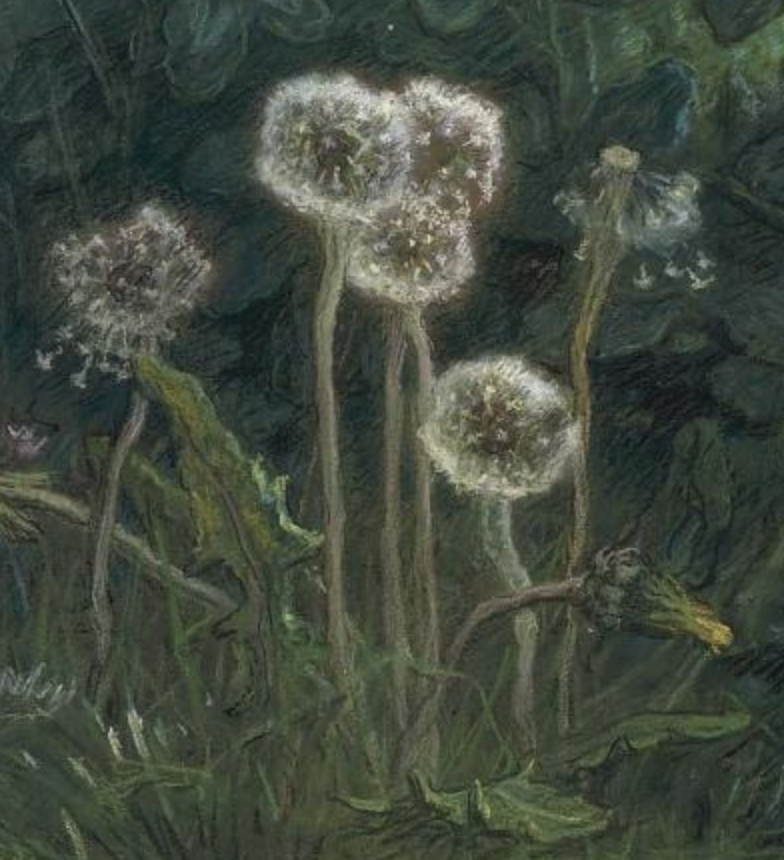
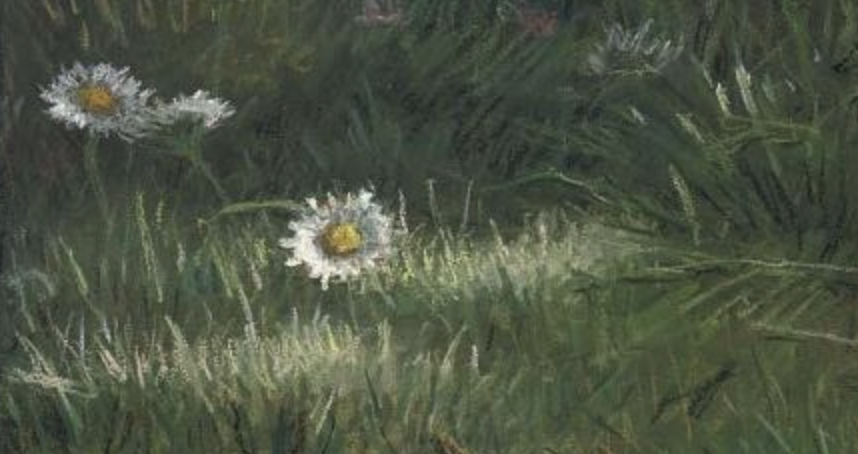
Look at the care Millet takes to show us all the richness of greens in grasses, stems, and leaves.
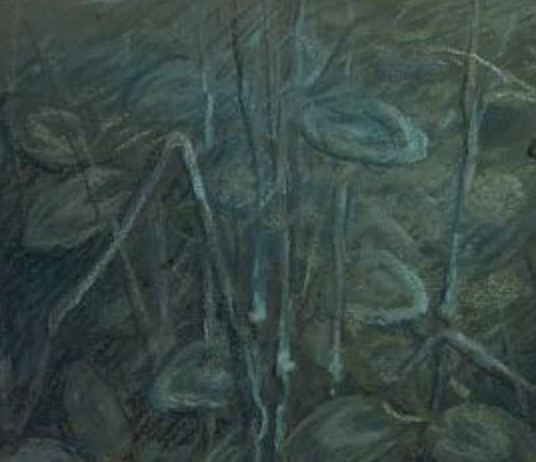
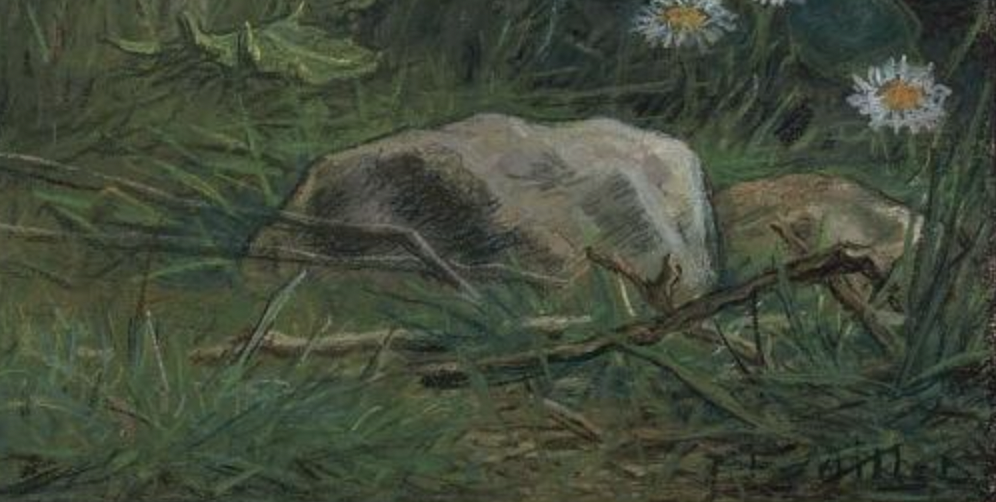
And then there’s the movement – can’t you sense the seedheads drifting away?
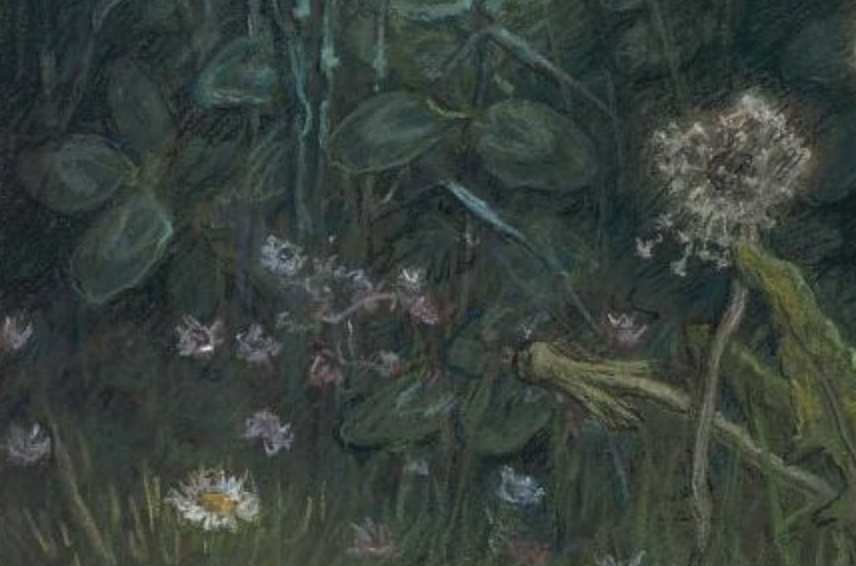
A marvellous painting, and a fairly large one, of an inconsequential patch of dandelions presented as stars on a stage.
What are your thoughts about this painting?
___________________________________________________________________
A workshop in pastel changed the style of her work
Growing up in New York State’s Hudson Valley, Pastel Live 2022 faculty member Christine Debrosky, had easy access to Manhattan’s world-class museums and galleries and close proximity to the art colony of Woodstock, all of which influenced and inspired her to pursue a career in art.
Starting in watercolour, followed by oil, one day she took a class in pastels that “marked a change in her work, to a looser, more impressionist bent.” Soon after, she was winning awards and had many exhibition opportunities. She has earned signature status with numerous groups including the American Impressionist Society and the Pastel Society of America, and she was inducted into Master Circle with the International Association of Pastel Societies.
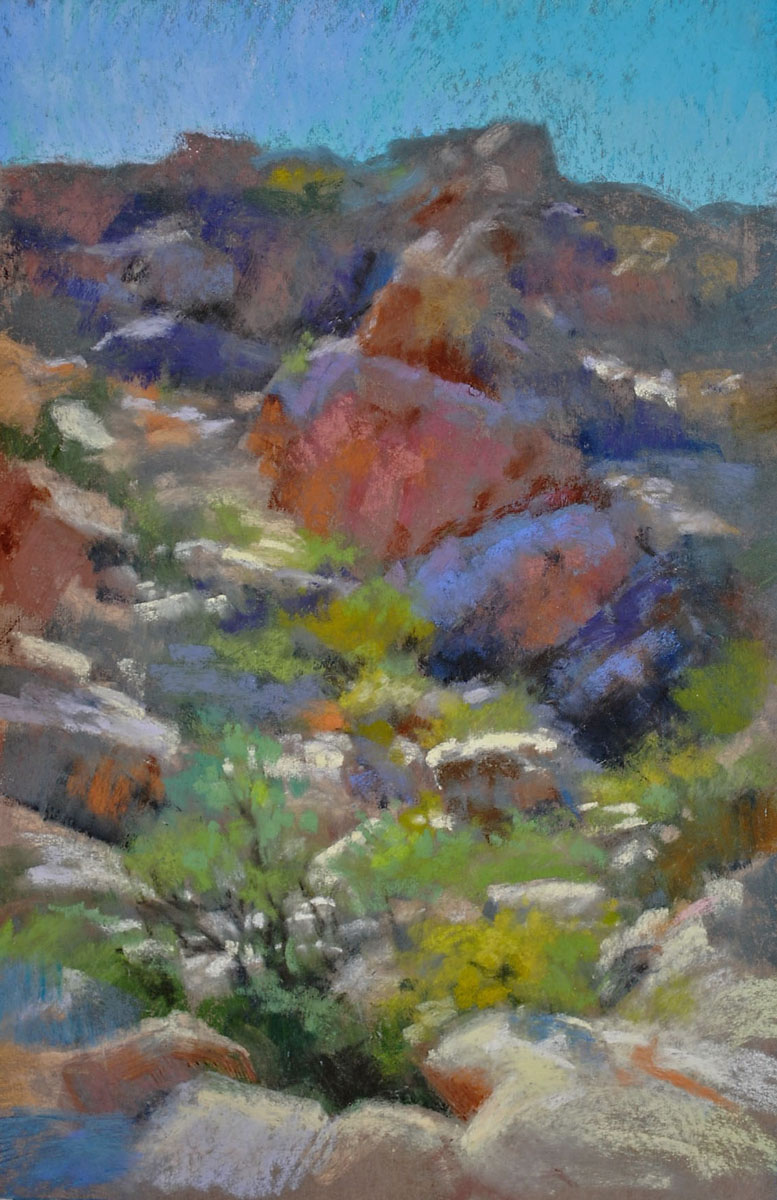
In 2014, she was one of ten American artists invited to exhibit with Societe des Pastellistes de France, an organization that boasted Edgar Degas as one of the original members. She was further honoured by the group, having one of her paintings selected for the invitations, posters, and billboards advertising the show.
A decade ago, a life-changing move to Arizona marked a change in palette and further understanding of natural light. After teaching in numerous locations, she’s always happy to return to her North Arizona home, where she lives with husband Wayne.
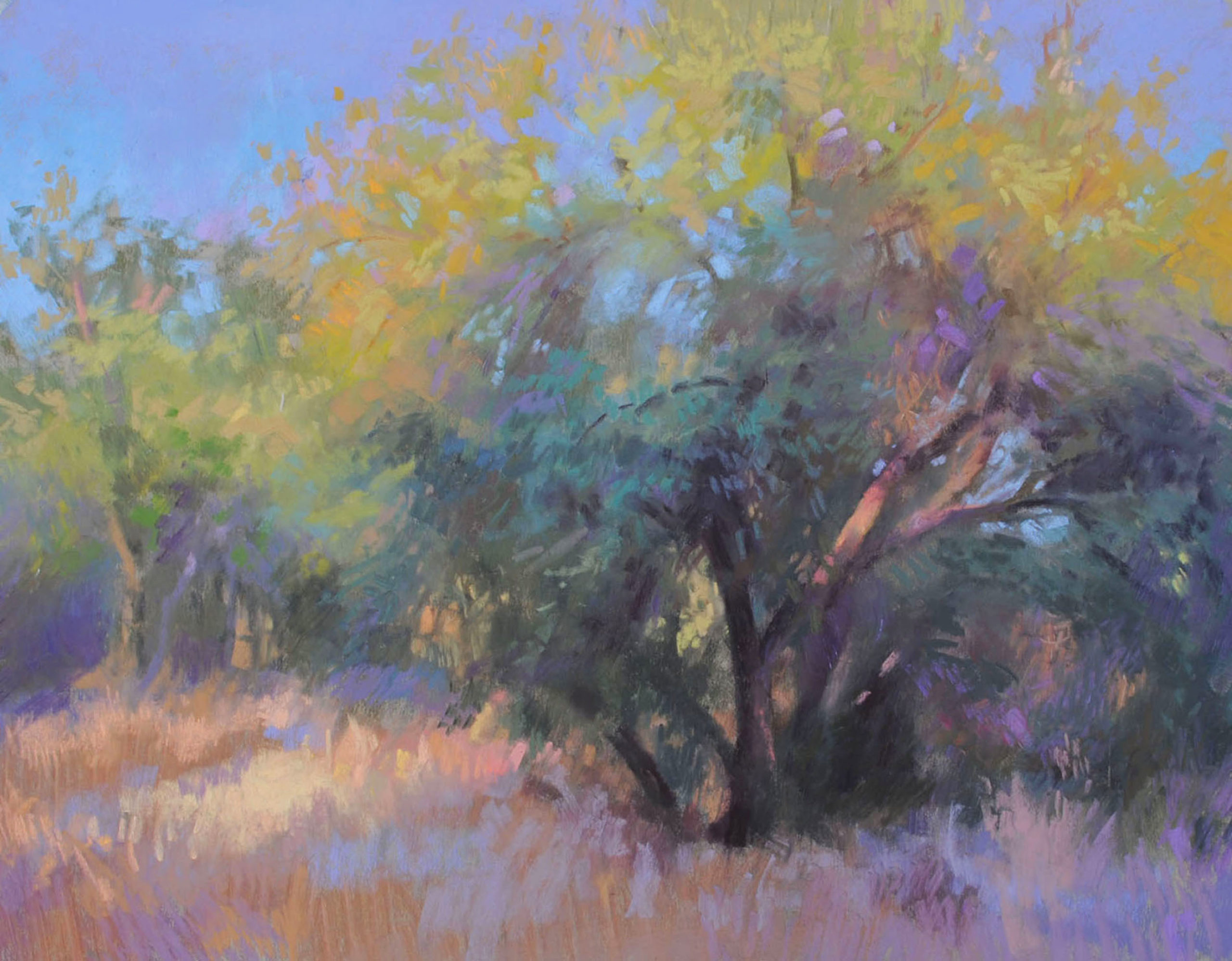
And that’s it for this time!
Gail
PS. Interested in the life cycle of the dandelion? Have a look at this fascinating timelapse video!


